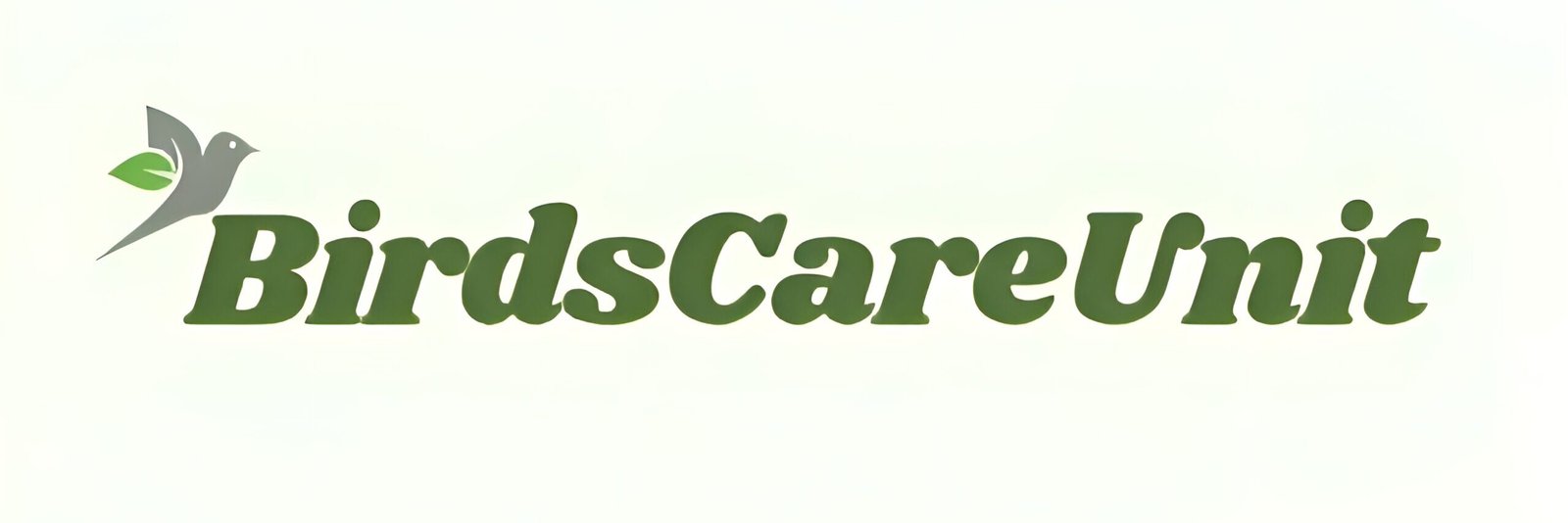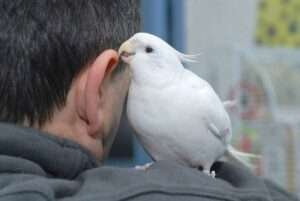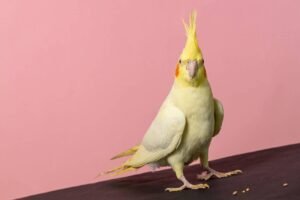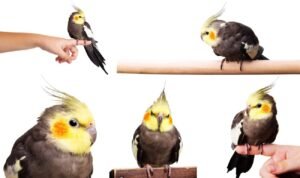10 Signs Your Cockatiel Trusts and Likes You

I’ve had many sweet moments with my cockatiel birds, especially with my tamed cockatiels. Cockatiels are not only charming, but they are also incredibly social and affectionate. For those who own one, it’s always rewarding to feel the connection and trust that builds over time between you and your feathered friend. But how can you be sure your cockatiel truly trusts and likes you? In this article, we will explore 10 clear signs that indicate your cockatiel is comfortable around you and enjoys your company.
These signs may not be immediately obvious, but once you recognize them, they are clear indicators that your bird is happy and has bonded with you. Let’s dive deep into each behavior, what it means, and why it shows affection and trust from your cockatiel.
1. Demand for Scratches
One of the most common ways a cockatiel shows trust and affection is by asking for head scratches. When your cockatiel lowers its head toward you, it is asking for attention in a way that makes it vulnerable, which is a clear sign of trust.
Cockatiels have a natural need to be preened. In the wild, they often rely on their mates to help them clean areas like the top of the head and neck, which are hard to reach. When your bird seeks out your hand for a head scratch, it sees you as part of its “flock” and trusts you to take care of its needs.
Additionally, the physical closeness required for this interaction shows that your bird is comfortable in your presence. A cockatiel that doesn’t trust you would never place its head so close to your hand for this kind of contact.
How to Respond:
- Always be gentle while scratching your bird’s head.
- Watch their body language. If they close their eyes or fluff their feathers, they are enjoying the moment.
- Never force a scratch; let your bird come to you when it’s comfortable.
2. Hanging Upside Down
While it might look a bit funny, a cockatiel hanging upside down is a great sign that they trust you. In this vulnerable position, the bird shows that it feels safe and secure in your presence.
Hanging upside down is a playful behavior that usually indicates comfort. It’s a fun way for your cockatiel to stretch its wings, legs, and neck, and it also reveals how at ease they feel around you.
In the wild, birds only exhibit vulnerable behaviors like this when they feel safe from predators. For a cockatiel to display this behavior near you, it means it has confidence in its environment and in you as its caretaker.
How to Respond:
- You can encourage this playful behavior by placing safe perches where your bird can hang upside down.
- Make sure your bird is safe when it’s playing or hanging in this position, with no sharp objects or dangerous areas nearby.
- Continue to maintain a calm and trusting environment where your bird feels comfortable enough to display such playful antics.
3. Following You Everywhere
Does your cockatiel follow you around the house? This is one of the clearest signs that your bird loves your company and wants to be near you.
Cockatiels are social creatures by nature. In the wild, they live in flocks and are always surrounded by other birds. When your cockatiel follows you from room to room, it sees you as part of its flock and doesn’t want to be separated from you.
This behavior is also a sign that your bird views you as a source of comfort and safety. Cockatiels are naturally curious and will follow their favorite human to see what they’re doing or just to be close.
How to Respond:
- Interact with your bird when it follows you. Offer it a perch or give it attention by talking or petting it.
- Make sure your bird is safe when it follows you, especially if you’re moving to rooms that may not be bird-proofed (like the kitchen or bathroom).
- Encourage this behavior by spending more time with your cockatiel, showing it that its company is welcome.
4. Wing Flapping
Wing flapping is a form of body language that birds use to communicate. When your cockatiel flaps its wings in your presence, it’s often a good sign that it’s feeling happy and content.
Wing flapping can sometimes be confused with a bird getting ready to fly, but often it’s just a way for the bird to stretch or show excitement. If your cockatiel is not taking off but is simply flapping its wings when you’re nearby, it likely means that it’s feeling playful or energized by your presence.
Additionally, wing flapping can help your cockatiel regulate its body temperature and get rid of excess energy, making it a normal and healthy behavior.
How to Respond:
- Give your bird some space to flap its wings freely.
- If your bird is flapping with excitement, interact with it by talking, offering treats, or encouraging play.
- Ensure that your bird has enough room in its cage or environment to stretch and flap without hitting anything.
5. The Happy Dance
There’s nothing quite as endearing as watching your cockatiel perform a little dance. This behavior, often paired with head bobbing and feather fluffing, is a clear sign that your bird is happy.
When your cockatiel dances, it’s usually an expression of excitement or contentment. It might even start singing or whistling along while it dances. This playful behavior is often reserved for when your bird is feeling especially comfortable and cheerful.
Cockatiels dance as a way of showing positive energy, and it’s often directed toward their favorite person. So, if your bird is dancing for you, it’s definitely a sign of affection.
How to Respond:
- Encourage your bird’s happy dance by interacting with it while it moves.
- Try playing soft music or whistling along with your bird to make the dance even more fun.
- Always provide a safe, open space for your cockatiel to move and dance without feeling cramped.
6. Singing and Mimicking
Cockatiels are known for their vocal abilities, and if your bird is trying to sing or mimic words, this is a fantastic sign that it likes you. Birds that feel close to their human companions will often try to mimic their sounds, words, or whistles as a form of bonding.
Even if your cockatiel’s attempts at speech or song are simple, they are still significant. These vocalizations are a form of communication, and your bird is using them to show its affection.
Male cockatiels are typically more vocal than females, but both can learn to whistle, mimic, or sing. The more you talk to your bird, the more likely it will try to imitate you, which strengthens the bond between you.
How to Respond:
- Talk to your bird often, repeating simple words or phrases to encourage mimicking.
- Respond to your bird’s singing or talking by engaging with it, which will strengthen your bond.
- Always be patient. Some birds take longer to develop their vocal skills, but even small sounds are a sign of affection.
7. Letting You Carry It
Even if your cockatiel is tamed, it won’t always let just anyone carry it. Allowing you to pick it up and hold it is a strong sign of trust and affection. Your bird sees you as a safe place and feels comfortable enough to be handled by you.
Some birds are more independent, and while they might enjoy sitting near you, they won’t necessarily want to be carried. However, if your cockatiel willingly steps onto your hand and lets you carry it around, it means that it trusts you completely.
This behavior shows that your bird is not only comfortable with you but also enjoys your physical closeness.
How to Respond:
- Always approach your bird gently when trying to pick it up, using positive reinforcement like treats to encourage the behavior.
- Never force your bird to be carried if it seems hesitant; trust must be earned gradually.
- Hold your bird securely but gently, ensuring it feels safe in your hands.
8. Preening Around You
Preening is a bird’s way of grooming itself, and it’s an essential part of keeping its feathers clean and in good condition. If your cockatiel is preening itself while sitting near you, it’s a strong indicator that it feels safe and comfortable.
Birds are vulnerable when preening because they’re focused on their grooming rather than their surroundings. If your cockatiel feels secure enough to preen around you, it’s a clear sign that it trusts you.
Preening is also a way for birds to relax, and it’s often done when they’re in a calm and peaceful state. So, if your bird is grooming itself while sitting on or near you, it’s not only comfortable but also content.
How to Respond:
- Let your bird preen without interruption, as this is a time for it to relax.
- You can gently talk to your bird or offer a treat if it preens close to you, reinforcing the bond of trust.
- Ensure that your bird’s environment is safe and quiet during preening times.
9. Eye Contact
Eye contact is another subtle but significant sign that your cockatiel trusts and likes you. Birds are naturally cautious creatures, and in the wild, they avoid making direct eye contact with potential threats.
When your cockatiel makes eye contact with you, it’s trying to communicate or seeking your attention. This behavior shows that your bird is comfortable enough to engage with you and trusts you enough not to see you as a threat.
If your bird is regularly making eye contact with you, especially during interactions like talking or playing, it’s a sign of affection.
How to Respond:
- Return your bird’s gaze gently to show that you acknowledge its attention. You don’t need to stare intensely, but maintaining soft eye contact helps strengthen the bond between you and your cockatiel.
- Try speaking softly or offering a treat when your cockatiel makes eye contact. This reinforces the positive interaction and shows that you value its attention.
- Avoid sudden movements or loud noises when your bird is making eye contact, as this can break the trust it’s building with you.
10. Beak Grinding
Beak grinding is a behavior many cockatiel owners might find unfamiliar, but it’s actually a great sign of contentment. When a cockatiel grinds its beak, it’s a signal that it feels safe, happy, and relaxed. Beak grinding often happens when a bird is about to go to sleep or is resting in a calm environment.
This behavior is equivalent to a cat purring—it’s a way for your bird to express its comfort and satisfaction. So, if you hear your cockatiel grinding its beak while sitting near you, it’s a strong indication that it feels safe in your presence.
Beak grinding is generally a quiet, soothing sound that can be heard when your cockatiel is calm, usually during the evening or after a long day of activity.
How to Respond:
- Allow your bird to relax and enjoy its moment of peace when you hear beak grinding.
- You can sit quietly with your bird during this time, offering a sense of security and companionship.
- If your cockatiel grinds its beak while perched on you, consider it a compliment! It feels safe and relaxed around you.
Building a Strong Bond with Your Cockatiel
Now that you know the 10 signs that your cockatiel trusts and likes you, it’s important to understand how to foster and maintain this bond. Cockatiels are social and intelligent birds, and building a relationship with them takes time, patience, and love.
Here are some tips to help strengthen your bond with your cockatiel:
1. Spend Quality Time Together
The more time you spend with your bird, the stronger your relationship will become. Make sure to interact with your cockatiel daily, whether it’s through play, training, or just sitting together. Cockatiels thrive on attention and social interaction, so dedicating time to them will help deepen your bond.
2. Create a Safe and Comfortable Environment
Your cockatiel needs to feel safe in its surroundings to develop trust. Make sure its cage is clean, spacious, and free of hazards. Place the cage in a calm, quiet area of your home where your bird can observe the household without being overwhelmed by noise or activity.
3. Offer Treats and Rewards
Positive reinforcement is key when building trust with your cockatiel. Offer treats during training sessions or simply as a reward for good behavior. Birds love food-based rewards, and this can help create positive associations with you.
4. Be Patient and Gentle
Trust doesn’t happen overnight, and it’s important to be patient with your bird, especially if it’s new to your home. Always approach your cockatiel calmly and avoid sudden movements that could startle it. With time, your bird will come to see you as a source of safety and companionship.
5. Engage in Interactive Play
Cockatiels are intelligent and playful birds that enjoy mental stimulation. Provide toys, puzzles, and other interactive activities that engage your bird’s curiosity. Playing together is a great way to bond and keep your bird mentally and physically active.
6. Learn Your Bird’s Body Language
Every bird has its own unique way of communicating. Pay attention to your cockatiel’s body language and vocalizations to understand what it likes and dislikes. Being in tune with your bird’s behavior will help you respond appropriately to its needs and build trust over time.
Conclusion
Cockatiels are affectionate and trusting birds that form deep bonds with their owners. By recognizing these 10 signs—demanding scratches, hanging upside down, following you around, wing flapping, happy dancing, singing and mimicking, letting you carry them, preening around you, making eye contact, and beak grinding—you can be sure that your cockatiel feels safe, comfortable, and happy in your presence.
Building a relationship with your cockatiel takes time, but the rewards are immense. These birds are loving, intelligent, and full of personality, making them wonderful companions. By understanding and responding to the signs of trust and affection, you can create a strong, lasting bond with your feathered friend that brings joy to both of you.
Remember, the more you invest in your relationship with your cockatiel, the more affection and trust you’ll receive in return. Whether it’s through play, gentle scratches, or simply spending time together, your cockatiel will show its love in many beautiful and unique ways.



